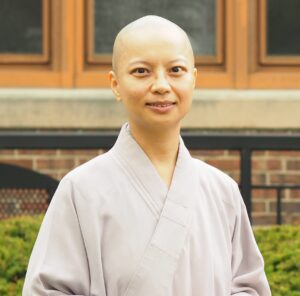
Embodied Learning in the First-Year Tutorial
One of my courses is a first-year tutorial designed to fit in with the college-wide objectives to develop new students’ basic academic skills, including writing, critical reading, and oral communication. It also involves individually advising new students to navigate their learning journey until they declare their major field of study. Because the course has multiple goals, it took me a long time to think about an appropriate topic to connect college students’ academic success with their personal lives. I also facilitate students’ embodied learning in their first year. What strategies can I teach them that will enhance their learning progress while adjusting to a new school environment.
When designing my course, I found Tammy J. Freiler’s view of being attentive to the entire body as a way of whole-person learning to be helpful. She argues that embodiment is an approach “to construct knowledge through direct engagement in bodily experiences and inhabiting one’s body through a felt sense of being-in-the-world…. It also involves a sense of connectedness and interdependence through the essence of lived experiencing within one’s complete humanness, both body and mind, in perceiving, interacting, and engaging with the surrounding world.”[1] The statement of “complete humanness” inspired my tutorial course topic, “Mindfulness: The Art of Living,” in which I guide students to develop a sense of physical and mental awareness.
This is not a meditation course. Instead, the class uses mindfulness as a subject of study. Students study Jeff Wilson’s Mindful America (Oxford, 2014) to build reading, writing, and presentation skills. They also learn how to evaluate the credibility of online resources. While I guide students to take an active role in learning and exploring their academic interests, I encourage them to incorporate mindful practices into their professional performance and everyday life. Teaching the tutorial not only helps me critically reflect upon how to develop a more holistic view of education, but also makes it clear that the traditional approach to teaching mindfulness focuses primarily on the mental aspect, which creates some pitfalls. Although establishing mind-body interaction is the goal, it is easy to neglect the living body as a medium for knowing and connecting with the surrounding world. Several questions and challenges arise, and I have learned at least two noteworthy points about embodied learning.
Providing practice-based learning opportunities is not enough. Active engagement is the key to triggering embodied experiences. This notion is too obvious to be overlooked. My first day teaching this class was a bit challenging, in part because it was ironic to guide a discussion about “mindfulness” when students were sleepy. The class started at 8:00 am, a time when young learners felt a lack of energy. Attempting to address this, I added two-minutes of mindful listening (to the natural sounds of birds singing or forest stream), combined with three minutes of relaxing body movement. In theory, this should have been beneficial and meaningful. Some students, however, did not find it useful. Why? The critical element is engaging with the doing and being immersed in the activity. It takes practice to hone one’s mindfulness and cognition. Students cannot gain any constructive effects unless they develop exactly their own whole-body practice, bringing sensory organs and the mind together.
Learning space matters, but students may not be mindful of their interactions with the external world. Being at a residential college, all full-time students are required to live on campus, thus there are very few clear boundaries between living and studying spaces. How can I help students develop their bodily awareness in academic environments and beyond? I ask students to write a journal to observe their study habits and in what ways they learn the best. The main concern is whether their bodily activities are related to a learning task in a meaningful way, or not. In addition, I have them pay attention to where the most effective locations that enhance their productivity are, to help students think about how environments affect their cognitive process. Some students report locations where they feel less anxious while doing homework, including the Spencer Grill (a café), the atrium at the Human and Social Studies Center, and outdoors. None of them mention their dorm rooms. Students’ reflections are meaningful, as they develop their bodily awareness on campus, acknowledge the body as a basis for their being in the world, and create a personal connection with their surroundings. Teaching first-year students about mindfulness allows me to reflect that learning involves embodied cognition. Although most agree that mindfulness is a practical approach to dealing with day-to-day issues, not everyone values the importance of being attentive to the body. They tend to take their physical presence for granted, and aren’t aware of body experiences as a way of knowing. Thus, it is my responsibility to guide students to develop cognitive awareness, which can subsequently help them appreciate mind-body integration as a powerful tool to enhance productive learning.
[1] Tammy J. Freiler, “Learning Through the Body.” New Directions for Adult and Continuing Education 119, (2008): 40, DOI: 10.1002/ace.304.
Leave a Reply